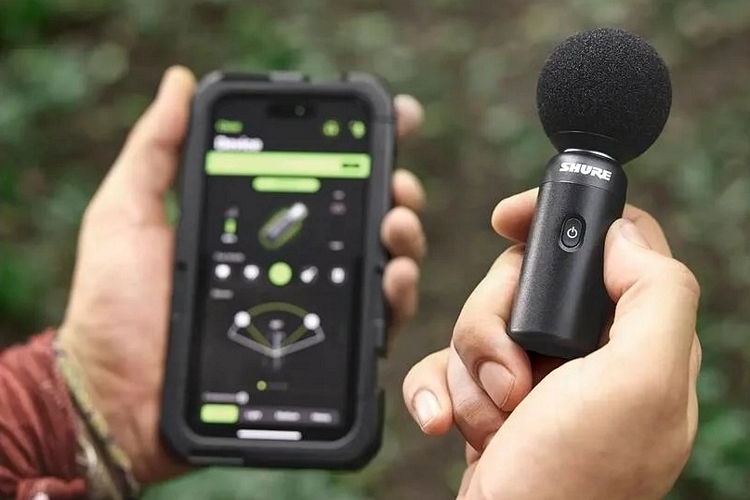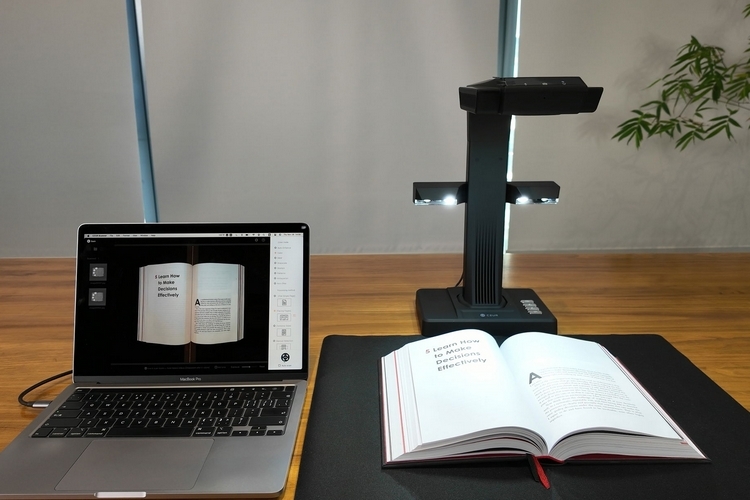
With a staggering amount of innovative devices and newfangled gadgets on hand, the Consumer Electronics Show (CES) 2023 floor is a challenging place to navigate. There’s just so much new stuff to see, especially with over 2,200 companies proudly showing off their latest creations. If you find yourself confused about all the product releases that suddenly descended over the weekend, this collection of the standout tech we’ve seen at the show should help get you up to speed.
These are the best tech we found at CES 2023.
Lenovo Yoga Book 9i
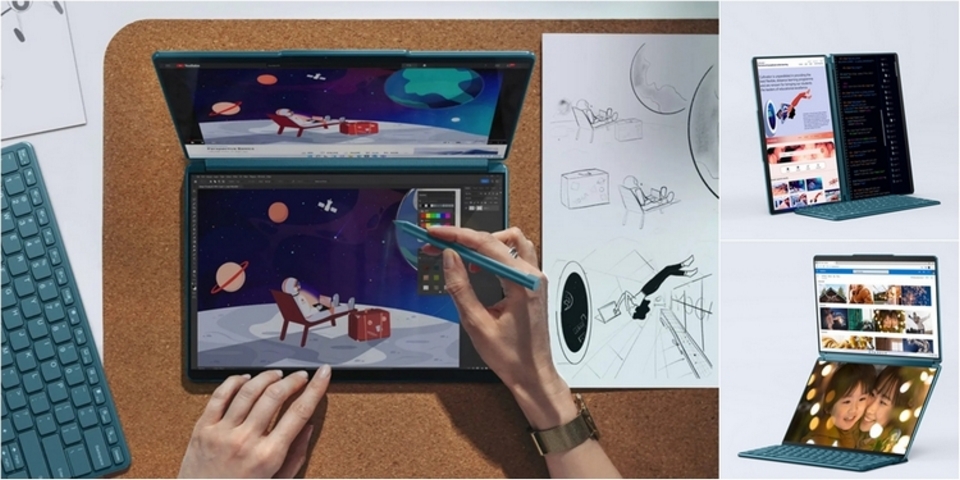
Easily the most exciting laptop at the floor show, Lenovo took the keyboard out of the clamshell and put another 13.3-inch 2.8K OLED monitor in its place. Yes, you can use this like a traditional laptop, with the second monitor employed as a virtual keyboard. However, it also comes with a kickstand and a wireless keyboard that lets you use it as a dual-monitor PC, with the option to mount it in portrait with two monitors side by side or landscape with the monitors stacked on top of each other. There’s also a stylus, which makes perfect sense to use when you set it down flat like a giant drawing board. Just make sure to bring along a wireless mouse, too, since that will make using this significantly easier (the virtual trackpad just isn’t cutting it). It’s slated to come out in June 2023, which should give Lenovo enough time to iron out the kinks.
Intel N-Series Processors
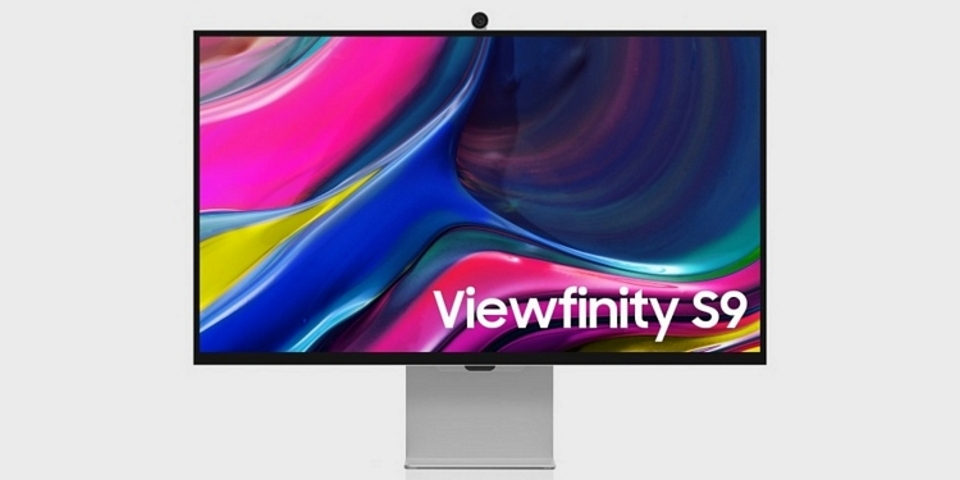
For artists, graphic designers, and photographers, being confident your monitor displays accurate and consistent colors is paramount. It’s the only way to ensure whatever images you’re working on will appear the way you intend them to look, especially once they’re in the hands of clients and consumers. That’s why Samsung’s 27-inch 5K monitor for creatives brings 99 percent DCI-P3 color coverage, 600 nits of brightness, and a Color Calibration Engine that makes it easier to precisely calibrate the display’s color and brightness without the need for a colorimeter, instead relying on the companion Samsung Smart Calibration mobile app.
Poly Voyager Free 60+

We’re big fans of affordable computing out here and, we must admit, the rising prices of goods have made it difficult to find decent-performing laptops at $400 or under. We have a feeling that will change with Intel’s new N-Series CPUs, which the outfit is positioning for precisely those kinds of entry-level portables.
The lower end of the N-Series consists of the N100 and N200 processors, both four-core, four-thread chips, which you’re likely to see in the most affordable Chromebooks coming out throughout the year. On the higher end, you get the eight-core, eight-thread i3-N300 and the i3-N305, both of which sound like 12th-gen Intel CPUs without any of the Performance cores. Basically, just a processor running in Efficiency mode, which, for a lot of people, is all they really need.
Samsung ViewFinity S9

True wireless earbuds tend to be designed for use on the go, with folks expected to switch to more traditional headsets once they plop down on the office chair at work. Not this TWS model from Poly, which combines the compact design of contemporary wireless earbuds with work-friendly features, making it a viable full-time replacement to traditional headsets. You can use it like any regular TWS earbuds, with its adaptive ANC with transparency mode, IP54 water resistance, and multipoint Bluetooth.
What makes it unique, of course, are the workplace features. For instance, it’s designed to work with Poly Lens Desktop, along with iOS and Android apps, making it easy to customize the earbuds for both users and IT departments. It’s also certified by leading virtual meeting providers, such as Microsoft Teams, Zoom, Google Meet, Cisco, and more. Don’t like using your phone in the office? Not a problem, as you can even adjust the earbuds’ settings from the charging case, which has a built-in touchscreen with access to various functions.
CosmOS by Sonical

Sonical describes the CosmOS as a bridge between a universe of apps and endpoint devices. Basically, it’s an OS designed to run on headphones and other IoT devices that will allow those erstwhile passive devices to run all sorts of apps. That means your headphones can gain a whole lot of functionality beyond what the manufacturer initially intended by simply leveraging the outfit’s app inventory. For instance, you can download a translation app to your wireless earbuds that can automatically translate foreign phrases your microphone picks up or even download an offline music app, so you can listen to some tunes without bringing your phone when you go out for a run. It’s pretty exciting if they can make it work.
Alienware AW2524H Gaming Monitor
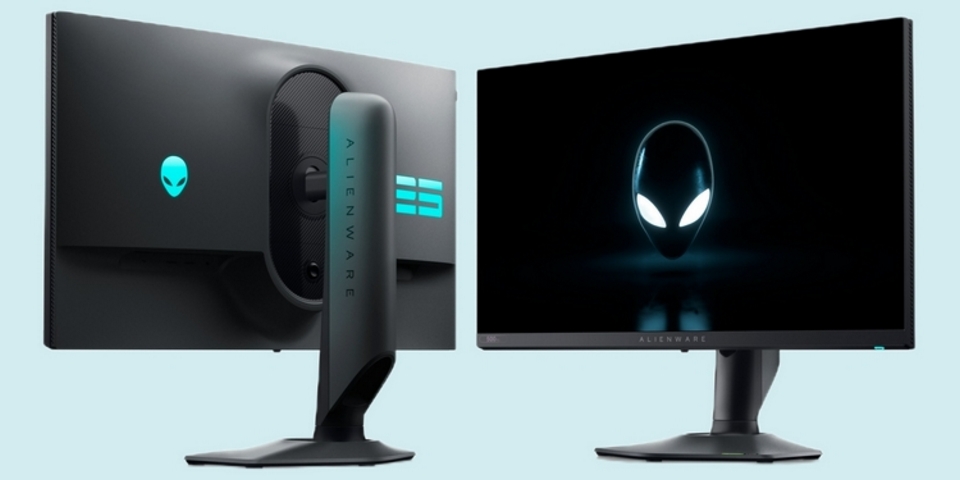
This monitor seems normal enough, with its IPS panel, 24.5-inch size, and 1080p display. Except, it’s designed to offer a native refresh rate of 480Hz, complete with the option to overclock to 500Hz. That’s right, 500 frames per second for the smoothest gameplay imaginable. Provided, of course, your GPU has enough muscle to actually generate that many frames. Other features include 99 percent sRGB color coverage, VESA DisplayHDR 400 support, 0.5ms latency, and a built-in retractable headset hanger that pops out on the left side.
HTC Vive XR Elite
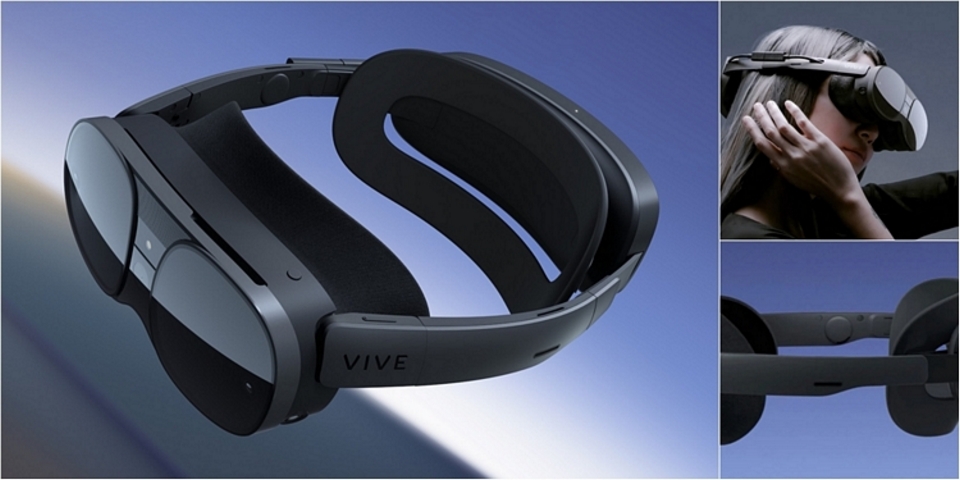
Yes, HTC is back to making consumer virtual reality (VR) headsets, and this one is ready to square up against Meta’s flagship Quest Pro. You get 2K resolution in each eye for full 4K pictures, a 90Hz refresh rate, and a 110-degree field of view, so it produces some stunning visuals. At the same time, four wide-FOV cameras enable inside-out spatial tracking, eliminating the need for external sensors. It also uses those same cameras for passthrough video, allowing you to see your actual environment mixed in with augmented reality (AR) elements.
It can operate as a standalone device for running VR experiences supported by the headset, which, admittedly, doesn’t give you a large pool of content. Of course, there’s also the option of hooking up to a PC for playing full-featured games and VR software, as well as pairing with your phone, in case there’s a mobile VR app you’d like to use with the headset.
Withings U-Scan
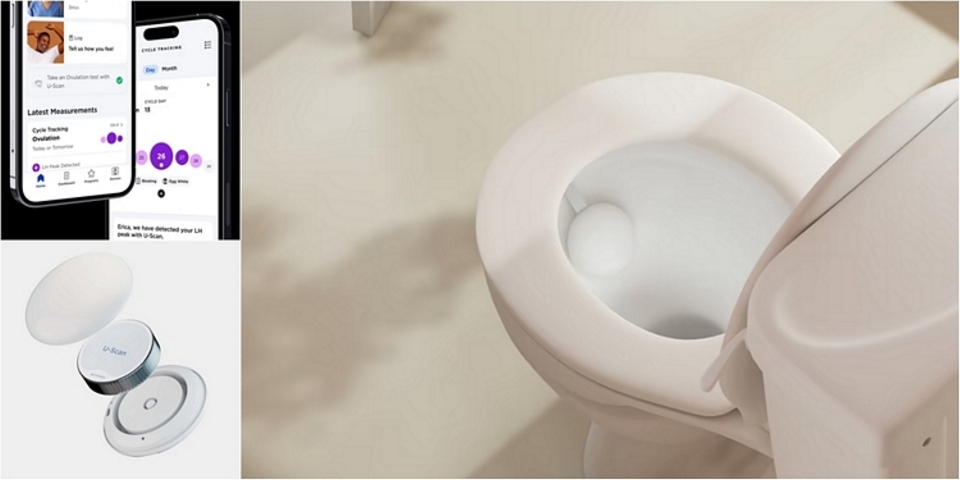
How deep do you want to go into tracking as many aspects of your health with gadgets? If you answer anything approximating “as deep as possible,” you may want to pick up this pee sensor, which installs right on your toilet. That’s right, it’s a sensor that tests your pee every time you take a tinkle. What can it detect? According to the outfit, it will check your urine for ketone, vitamin C, and pH levels, which it will use to inform you of any potential health issues it detects (e.g. abnormal pH levels tend to point to problems with kidney health) and what you can do about it. For women, they also have a version that can track menstrual cycles if that’s more along what your own tracking needs require.
LG Signature OLED M3
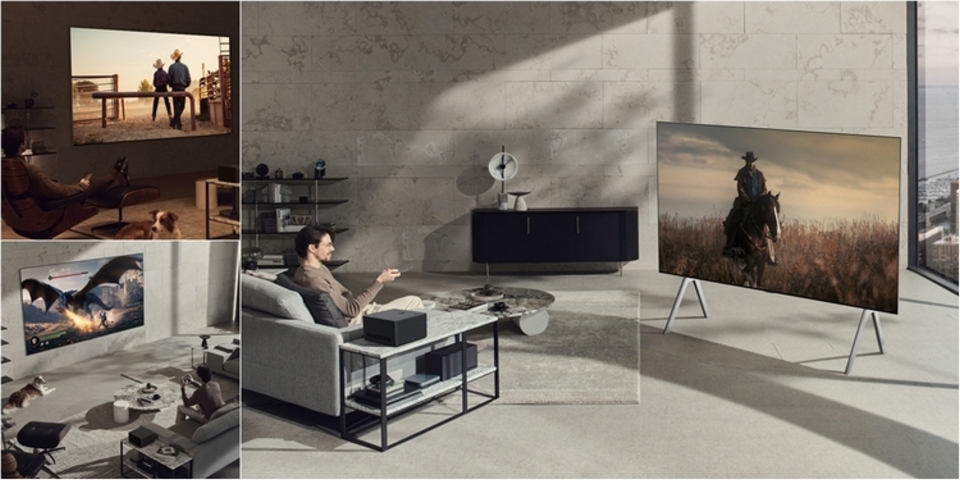
Arguably the best TV at CES 2023, this 97-inch 4K TV has zero ports on the back. The only thing you’ll find, in fact, is a power cable, so you only need to run a single wire from the TV to your power outlet. So how do you use it with your cable box, streaming stick, and game consoles? Well, it comes with an external box that can connect wirelessly to the TV, which you can tuck away in a separate shelf to move the unsightly mess far from the actual viewing screen. According to LG, the device can transmit up to 4K pictures at 120Hz to the TV at distances of up to 30 feet away. Simply put, if you don’t like media cabinets brimming with wires and peripherals of all sorts, this device will let you clean things up like no other.
Volkswagen ID.7

Volkswagen’s electric sedan on the show floor is based on the Aero3 concept revealed last year. What makes it special, though, is the digital camo print on the exterior, which comprises 40 layers of paint, with some layers being conductive and some having insulating properties. This mix of conductive and insulating coatings allow the paint job to light up in different colors, with the car offering 22 distinct light-up areas that the driver can control individually. According to the outfit, you can even hook up the paint job to the car’s sound system, which will allow it to sync with whatever music is playing on the ride.
Lumus AR Lenses
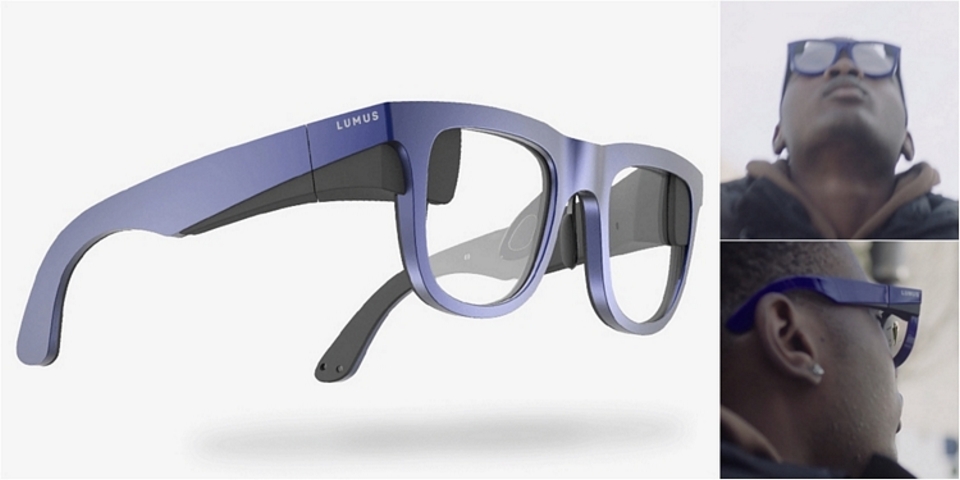
There’s a good likelihood that as long as VR and AR require you to wear large, bulky headsets, those technologies will never be mainstream. You just can’t expect people to want to strap contraptions that cover the upper half of their face for multiple hours at a time. Lumus is a big believer in that, as well, which is why they’ve put their energies towards creating AR glasses that are easier to fit into everyone’s lives.
At the CES show floor, the outfit showcased AR glasses that use their second-gen “Z-Lens 2D Waveguide” lenses, which look just like regular lenses, all while incorporating display tech that can show 2K resolution images in each eye. How does it work? Apparently, there are tiny projectors held in the eyeglass frames that beam inside the semi-translucent lenses, essentially projecting full pictures right on the lenses you’re wearing. According to the outfit, the projected light is only visible to the person wearing the glasses as it will produce minimal leakage, so your wife can’t know you’re actually watching a game while you pretend to watch your daughter’s recital. Hopefully. If you wear prescription glasses, that’s not an issue, either, as Lumus claims the tech can be bonded directly to your prescription lenses without distorting the AR images.
JLab OTC Hearing Aid
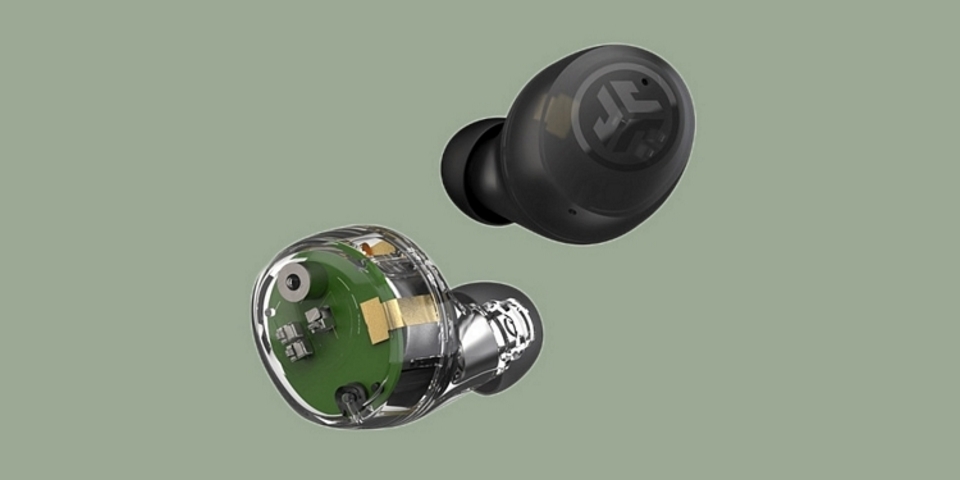
While we’ve seen plenty of over-the-counter hearing aids since the US FDA authorized their sale last year, prices tend to remain a bit prohibitive. JLab looks to change that with a $99 model, which, they claim, will offer comparable performance as other OTC hearing aids, all while coming in at a more affordable price point. Granted, details are sparse about the hearing aids, so it might not be as good as popular models from Bose or Sony, but if it performs anywhere close, we imagine this will turn out to be a big hit for the outfit. JLab’s hearing aid is slated to come out in the third quarter of the year.
Valencell Fingertip Blood Pressure Monitor

Valencell makes optical heart rate technology widely used in many wearable devices that incorporate heart rate tracking into their feature set. This time around, though, they’re looking to make their own branded device in the form of this blood pressure monitor that can check your blood pressure level by using a small probe on the middle finger. That’s right, no need to wrap an inflating sleeve around your arm, as this thing clips to your finger and uses photoplethysmography (PPG) sensors to measure your blood flow patterns. The AI algorithm combines that reading with your personal details (age, weight, gender, and height) to produce the blood pressure measurement, which it displays on the integrated display, with no need for any calibration. According to the outfit, the entire process takes under a minute, so you can check your blood pressure in a jiffy. The device is currently pending FDA clearance.
WPC Qi2 Standard for Wireless Devices

The Wireless Power Consortium (WPC) introduced a new wireless charging standard at CES, which could finally unify the industry. What about Apple, you ask? Well, they actually used Apple’s MagSafe technology as the basis for the new Qi2 wireless charging standard, so there’s a good chance you can soon charge your iPhone on the same device as your Samsung Galaxy phone. According to the outfit, the standard’s new Magnetic Power Profile will ensure the battery-powered devices are perfectly aligned with the wireless charging devices at all times, eliminating the need to check your battery icon to see if your phone is actually being charged while it’s in the Qi pad. The Qi2 standard is expected to arrive on retail devices in the fourth quarter of the year.
KEYi Loona
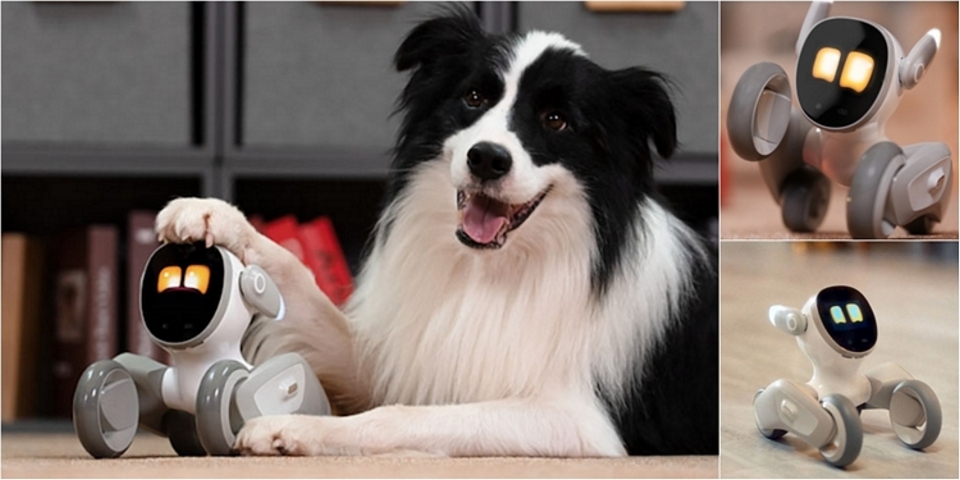
The concept of toy companion robots has been explored multiple times before, and while the KEYi Loona looks to bring, pretty much, more of the same, we do appreciate that this appears to be the most adorable robot pet we’ve seen to date. The darn thing looks and acts like it can pass off for a Pixar character. While the expressive digital eyes have long been a common characteristic for this category of robot toys, it’s able to take expressiveness to a new level with the way its ears and feet work. Same with the way its entire movement feels incredibly fluid. According to the outfit, it comes with over 700 rich emotional actions, which it expresses using a combo of its digital eyes, its ears, and its wheeled feet.
Beyond its ability to express some form of emotion, the robot has plenty of talents. It has robot vision that allows it to recognize up to 20 faces at a time, so it can get to know every single occupant of your home, along with any regular guests that come around. It can respond to voice prompts, too, so you can summon it to come from another room, while built-in haptic perception allows it to touch various objects and react to their sensations.
You can even use it as a roving security cam around your house, by the way, complete with the ability to see everything its camera is capturing in real-time. There’s an onboard speaker, too, if you want to converse with whoever’s in your home at any moment. And yes, your kids can program it to learn new interactions using a graphical coding platform, in case you’re looking to keep them busy with a new STEM toy.
GE Profile Smart Stand Mixer

Always wanted to learn baking, but all the necessary kneading, shaping, and proofing feels like too much work when all you want is to eat some bread? Yeah, it can feel that way. Fortunately, there are stand mixers that can spare you from some of the most tedious parts of baking. GE’s new stand mixer goes one step further with features that further automate other aspects of the baking process.
The seven-quart mixing bowl, for instance, pulls double duty as a smart weighing scale that manages all the different ingredient portions by itself, making it easy to add the precise amount without having to zero out the scale every time. It can also monitor changes in texture and viscosity whenever it’s mixing, allowing it to automatically optimize speed and even turn off the motor if that’s what it detects is necessary. That’s right, it turns the stand mixer into a set-and-forget appliance. Other features include dozens of preset recipes and voice control support (via Amazon Alexa and Google Assistant).
German Bionic Apogee
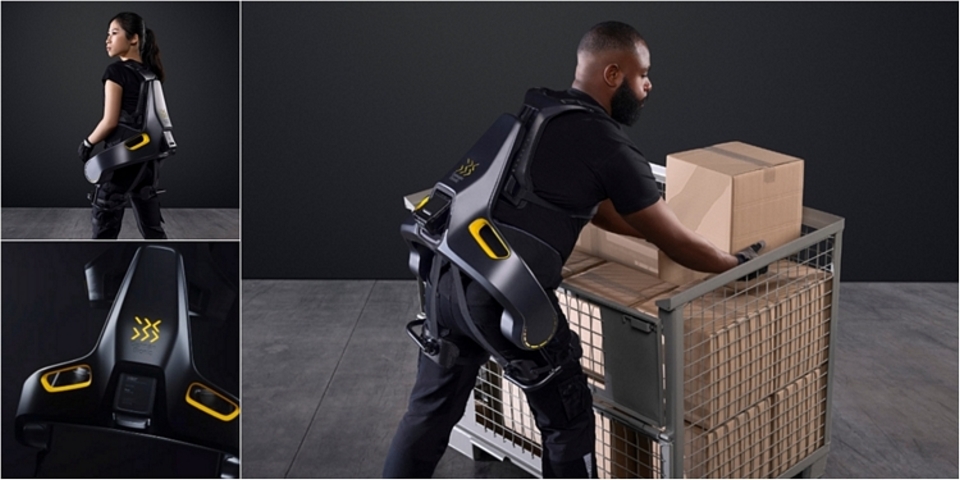
Want to lift heavier weights without spending copious amounts of time and energy in the gym? This exosuit has you covered. Designed to put some robotic hardware around your hips, back, and shoulders, the device can absorb up to 66 pounds of weight off whatever load you’re carrying, allowing you to lift heavier while inflicting less strain on the body through those long hours of physical labor. According to the outfit, the exosuit also collects and analyzes data about worker activity in real time, allowing it to alert users when they’re performing unsafe movements, so they could make this kind of backbreaking work just that much safer. Sadly, they won’t be selling the suit to amateur superheroes who could use the extra boost in their strength bar, as they’re intended for warehouses and other commercial businesses who want to roll them out to their workforces.
BMW I Vision Dee

The big story here is the car’s exterior, which is fitted with 240 fully-customizable E-Ink panels. Yes, those same displays you’ve seen used across various e-book readers. In this instance, though, they use a flexible E-Ink panel, which can display up to 32 different colors instead of merely showing grayscale like standard variants. Each panel can be controlled individually, allowing you to easily change the color of your car and even apply all sorts of custom designs. Inside, the entire windshield serves as a HUD, where the vehicle projects a selection of AR visuals to keep you informed during your drive. Oh yeah, the driver-side window also serves as an AR panel, which can display a personal avatar that you can talk to, much like an intelligent assistant.
Masonite MPwr Smart Door
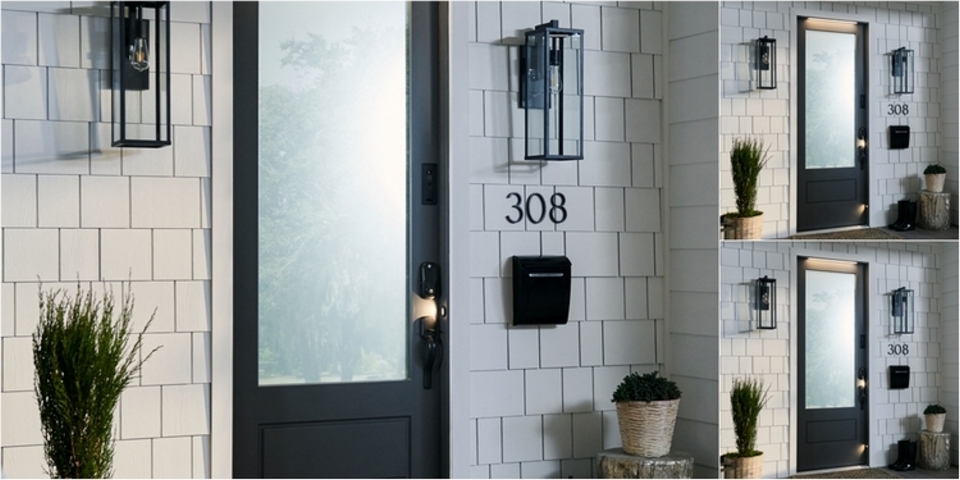
While everybody’s releasing smart locks, smart doorbells, and all sorts of newfangled contraptions to make your front door smarter, this outfit went ahead and built an entirely new front door with all the smarts built-in. That’s right, instead of installing individual smart devices, just replace the entire door with one that has those same devices in tow. Specifically, Masonite preinstalled their door with a Ring Doorbell Cam, a Yale Smart Lock, and LED lights, complete with power wires preinstalled, so you simply have to install the door, hook it up to an outlet, and set up all the integrated smart components. It even has a backup battery that can keep the electronic components running for up to 24 hours in case the power goes out.
GluxKind Ella Stroller
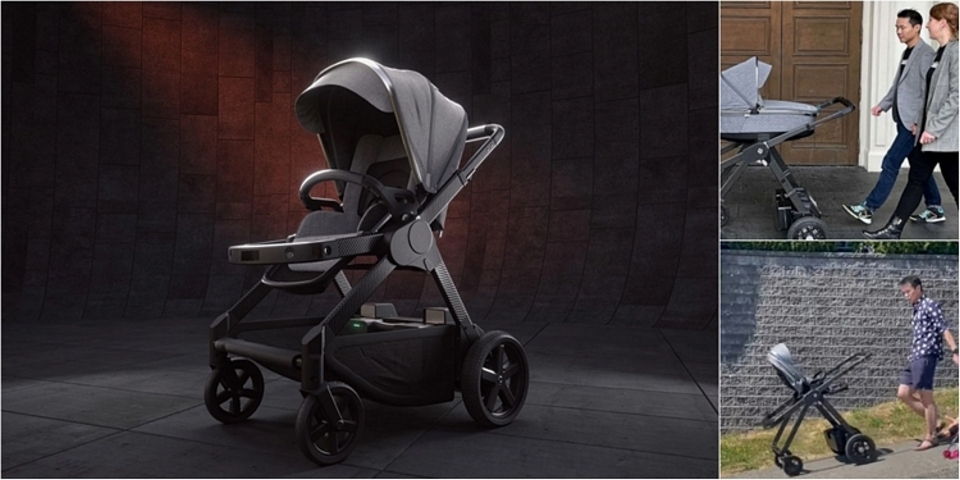
This stroller is equipped with adaptive push assist technology that will power the wheels when it senses an upward slope on the path, allowing you to push the stroller up inclines and ramps without putting in much effort. It also has intelligent braking that controls the speed of the stroller when you’re going down a sloped path, always keeping the stroller within arm’s reach so it never gets out of control. The system can even keep its eye on potential hazards (e.g. cars, bikes) and alert parents.
When the baby is not in the stroller, it activates autonomous mode, allowing you to hold on to your child while the stroller keeps pace as you walk, even parking itself when it detects you coming to a stop. Other features include an automatic rocking mechanism, a built-in white noise sound, and an optional smart travel system that lets you use the stroller’s crib as a car seat for babies.
Unistellar eQuinox 2 Smart Telescope
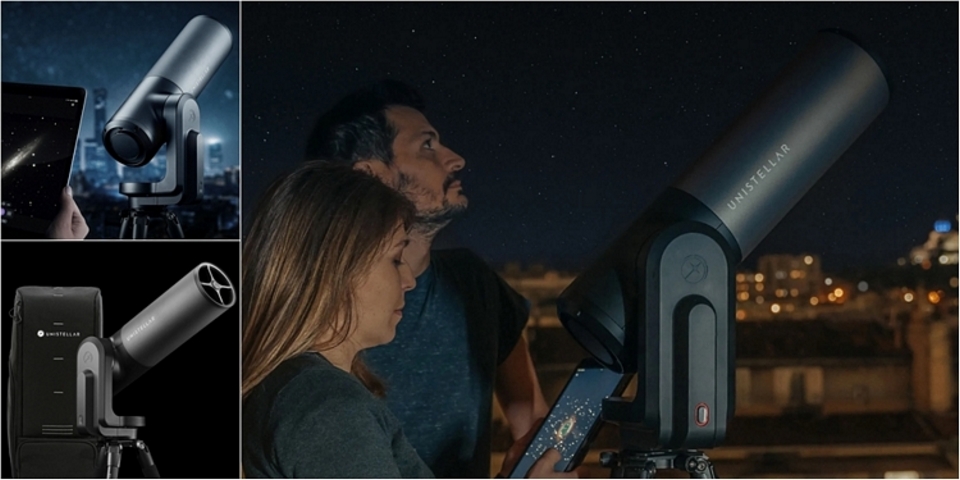
Unistellar brought their next-generation smart telescope to the show floor, which seeks to make observing the stars a much easier affair. How easy? According to the outfit, the telescope can be set up in only five minutes, allowing you to start looking at the stars in short order.
Like its predecessor, the telescope works with a companion app where you can specify any celestial body you want to view. From there, the device will orient itself to locate, focus, and track the target, so you can simply wait until it’s ready. This doesn’t have an eyepiece, by the way, so you do your viewing from the companion app, where it streams whatever its lenses capture in real-time. According to the outfit, over 5,000 celestial objects are currently available to select from the app.
Nuwa Pen
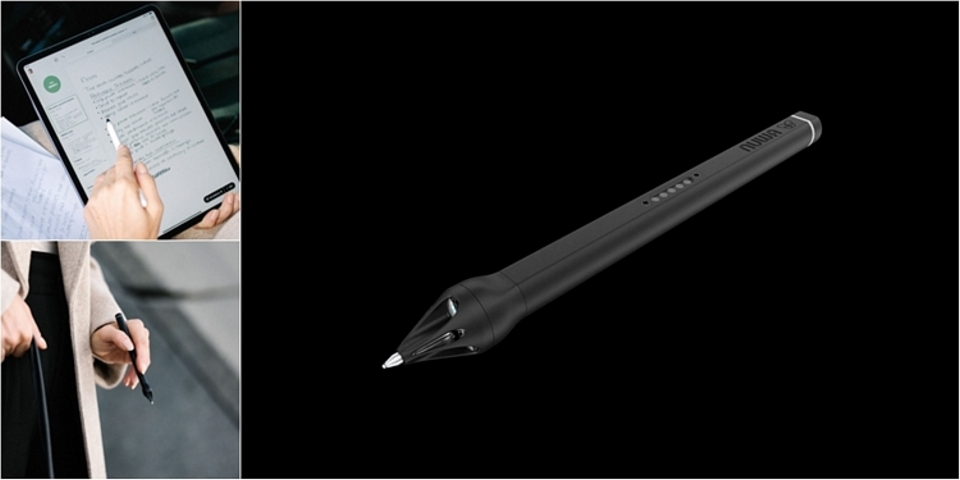
This smart pen is equipped with three cameras, as well as motion and pressure sensors, allowing it to accurately detect every line and stroke you make. Why would it do that? To digitize all your notes, of course, which it can send automatically to the accompanying app. The digital notes are searchable, too, so you can quickly look up notes on that brainstorm you had a year before.
The pen uses regular D1 ink refills, so you can easily replace cartridges any time ink runs out. It also means you can write on any kind of paper, with the device able to translate it into a digital copy. Battery life may be the only real downside here, as the small battery in the pen only keeps it powered for up to two hours of writing. Do note that fully charging it only takes 15 minutes, so you can probably plug it into your power bank whenever the writing instrument is not in use.
LG MoodUp Fridge
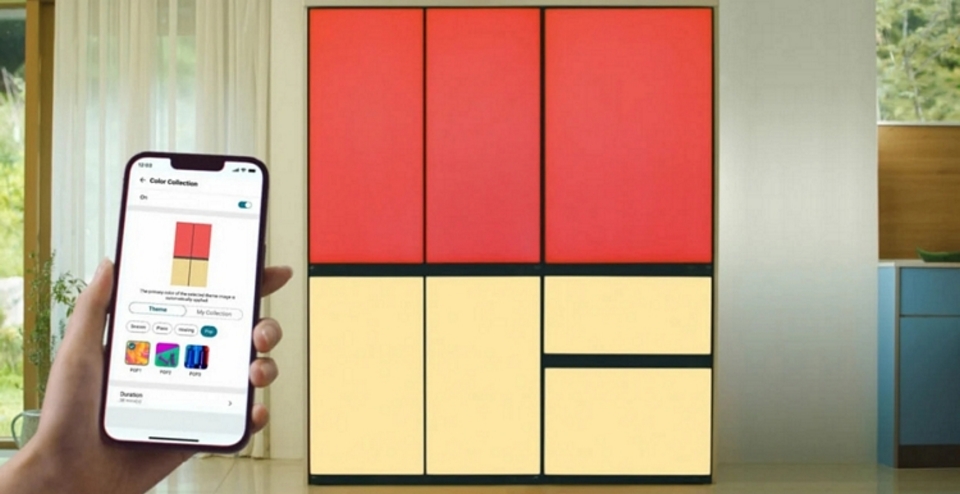
The LG MoodUp isn’t the first time people tried to make kitchen refrigerators more fun. We’ve all seen those fridges with built-in screens you can use to watch movies and even play games. LG’s solution, though, offers a way to set the mood in the kitchen by having LED-equipped door panels that can change colors at the push of a button. According to the outfit, the upper doors can be set to any of 22 colors, while the bottom doors can change into any of 19, resulting in 1,800 possible color combinations. Since music is just as effective a tool for setting the mood, the fridge comes with an embedded Bluetooth speaker that you can pair with over Bluetooth, allowing you to stream soothing music as you prepare dinner without bringing a separate speaker into the room. While LG first showed off the fridge at IFA, it remains an exciting attraction at CES this year.
Displace Wireless TV

While LG wowed the CES floor with a TV that eliminated all wired ports other than the power cable, Displace went ahead and showed off a 55-inch 4K TV that didn’t even have a power cable. Instead, it uses four hot-swappable battery modules that you insert along the edges for power, while a base station transmits content to the panel similar to LG’s solution. Similarly impressive is the active loop vacuum suction fitted in its back, which it uses to easily stick to any non-porous, flat surface. That’s right, you can just stick it to the wall, the window, or anywhere else you feel like putting the TV on. Do note that the suction tech is also powered by the batteries, so if you ever lose power on all batteries, your completely wireless TV will most likely fall to the ground. Ouch. Yeah… maybe they can add an option to install a VESA mount in there somewhere.
Quite possibly its most ridiculous feature, though, is the ability to snap multiple TVs together and have them function as one. According to the outfit, doing that with four TVs gets you a 110-inch 8K TV while doing it with 16 lets you put together a 220-inch 16K panel.
This TV, by the way, doesn’t use a remote, either. Instead, it has a camera top center that it uses to read gestures. You know… like how Microsoft envisioned Kinect changing the modern living room and ended up not doing that. Chances are, this will be refined further as the product develops, so maybe they’ll decide adding a remote (or, at least, an app) is actually a good idea. At any rate, it’s an impressive, if not overly ambitious, new TV startup, which is what CES is all about.
Lenovo Thinkbook Wireless Dock
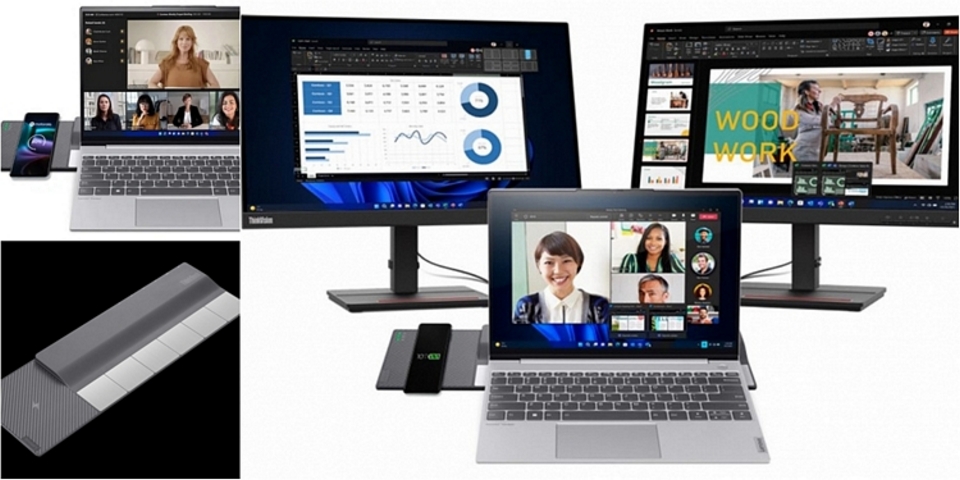
Designed for select Lenovo laptops, this wireless dock can charge the laptop wirelessly using Power-by-Contact technology at an impressive rate of up to 45W. There’s also extra space on the dock where you can lay down a Qi-compatible smartphone or any other device for 10W power delivery. Not content to transmit power without wires, the dock can also send data from the laptop to two 4K 60Hz monitors, allowing you to enjoy a three-monitor desk setup without any cables running from the laptop to the displays.
The dock is exclusively for the Thinkbook 13x Gen 2 for now. However, we have a feeling Lenovo will make more of their laptops compatible with this tech down the line. It uses Wireless DisplayLink technology from Synaptics, by the way, so there’s a good chance other manufacturers will adopt the same tech going forward, making this a likely preview for the cable-free workstations of our immediate future.

